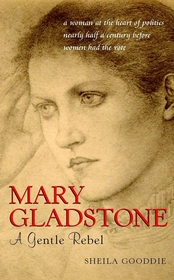
Endangered Heritage Sites
Enhanced Representations for Informed Solutions
Sorozatcím: Springer Series on Cultural Computing;
-
12% KEDVEZMÉNY?
- A kedvezmény csak az 'Értesítés a kedvenc témákról' hírlevelünk címzettjeinek rendeléseire érvényes.
- Kiadói listaár EUR 181.89
-
75 438 Ft (71 846 Ft + 5% áfa)
Az ár azért becsült, mert a rendelés pillanatában nem lehet pontosan tudni, hogy a beérkezéskor milyen lesz a forint árfolyama az adott termék eredeti devizájához képest. Ha a forint romlana, kissé többet, ha javulna, kissé kevesebbet kell majd fizetnie.
- Kedvezmény(ek) 12% (cc. 9 053 Ft off)
- Kedvezményes ár 66 386 Ft (63 224 Ft + 5% áfa)
Iratkozzon fel most és részesüljön kedvezőbb árainkból!
Feliratkozom
75 438 Ft

Beszerezhetőség
Még nem jelent meg, de rendelhető. A megjelenéstől számított néhány héten belül megérkezik.
Why don't you give exact delivery time?
A beszerzés időigényét az eddigi tapasztalatokra alapozva adjuk meg. Azért becsült, mert a terméket külföldről hozzuk be, így a kiadó kiszolgálásának pillanatnyi gyorsaságától is függ. A megadottnál gyorsabb és lassabb szállítás is elképzelhető, de mindent megteszünk, hogy Ön a lehető leghamarabb jusson hozzá a termékhez.
A termék adatai:
- Kiadó Springer Nature Switzerland
- Megjelenés dátuma 2025. október 2.
- Kötetek száma 1 pieces, Book
- ISBN 9783031919480
- Kötéstípus Keménykötés
- Terjedelem228 oldal
- Méret 235x155 mm
- Nyelv angol
- Illusztrációk XIV, 228 p. 85 illus., 78 illus. in color. Illustrations, black & white 700
Kategóriák
Hosszú leírás:
"
This book provides a thorough exploration of how heritage representation has evolved in the digital age, highlighting connections between diverse informed solutions for preserving and interpreting heritage knowledge. It provides a holistic overview of advanced surveying and visualization tools essential for decoding and analyzing cultural heritage data.
Techniques such as remote sensing, heritage building information modeling (HBIM), knowledge graphs, and game-based learning can unveil the complex layers inherent in endangered heritage sites. Beyond these tools, the book examines policy perspectives that require critical review and collective efforts.
A key focus of the contributions is the revolutionary role of the smart heritage information base as a new form of knowledge and practice. Enriched representations and integrated analyses have revolutionized heritage practices, moving beyond the traditional eidotypes that were prevalent until the first decade of the 21st century. The diverse array of the collected contributions in this book highlights a cultural and technical shift that represents a significant methodological and epistemological progress in the fields of digital humanities and heritage management.
With insightful analyses of heritage sites, especially archaeological remains, through real-world case studies in Spain, Portugal, Turkey, Pakistan, and Israel, this book delves into the challenges posed by human-made induced disasters and natural hazards, offering valuable insights into safeguarding our cultural heritage. These case studies not only show the challenges local sites and communities face now and, in the future, but also enrich the discourse on how to protect our shared cultural heritage together. The advanced mapping and analysis of these case studies reveal the importance to unveil hidden narratives, protect collective values, and reshape perspectives on cultural heritage in the digital age.
The target audience includes heritage practitioners, architects, archaeologists, urban planners, data scientists, researchers, academics, teaching institutions, and architecture students. Its international scope is reflected in contributions and editors from diverse locations. The thematic breadth appeals to a global readership interested in different theoretical and methodological approaches, complemented by a range of case studies across different cultural, economic, and environmental contexts and future scenarios.
" TöbbTartalomjegyzék:
Preface: From traditional eidotypes to enriched representations in cultural heritage.- Part 1: Smart heritage information.- Smart policies for heritage at risk.- Anastylosis of the Frigidarium in Patara ancient city using HBIM methodology.- Representing spatial and contextual information about megalithic monuments and the landscape: A knowledge-graph approach.- Part 2: Digital heritage forensics.- Endangered cultural heritage sites in the era of changing climate: Lessons learnt from Pakistan’s 2022 floods using satellite data and field observations.- Data-driven documentation: Techniques for historic buildings after anthropogenic and natural hazards.- Digitally aided analysis of medieval vaulted ceilings.- Part 3: Interactive participation in virtual heritage.- Amplifying the future of industrial heritage through digital representation and communication.- Enhanced knowledge transfer in historical site interpretation: A gamified approach for Yedikule Fortress/Türkiye.- Documenting and visualizing heritage in conflict zones: The underground water channel in Tel Gezer.- Digital engagement with remote architecture “furthest from the sea”: A virtual heritage approach.- Afterword.
Több





